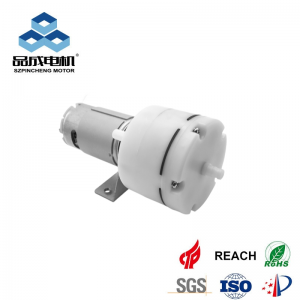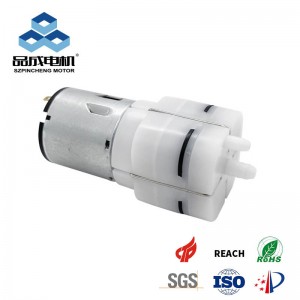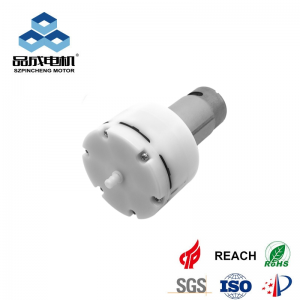Pre-Installation Planning and Preparation
Site Assessment and Environmental Considerations
Before installing your micro vacuum pump, conduct a thorough site assessment. Ensure the installation location provides adequate ventilation to prevent heat buildup, as proper thermal management is essential for maintaining pump efficiency and longevity. The environment should be free from excessive dust, moisture, and chemical vapors that could compromise pump performance. For DC vacuum pump installations, maintain sufficient clearance around the unit for maintenance access and heat dissipation.
Tools and Materials Preparation
Gather all necessary tools and materials before beginning installation. Typical requirements include appropriate tubing (compatible with your application media), hose clamps or compression fittings, electrical connectors, mounting hardware, and vibration dampeners. For 12v vacuum pump installations, ensure you have the correct gauge wiring and proper power connectors to handle the electrical load safely.
Mechanical Installation Procedures
Proper Mounting Techniques
Correct mounting is essential for micro vacuum pump performance and noise reduction. Use the manufacturer's recommended mounting orientation—most pumps function optimally in specific positions. Install vibration-absorbing mounts between the pump and mounting surface to minimize noise transmission and prevent vibration-related damage. For low power vacuum pump systems in sensitive applications, consider using additional isolation techniques to prevent microphonics or vibration interference with other equipment.
Tubing and Connection Setup
Connect tubing using secure, leak-free methods that match your application requirements. For DC vacuum pump installations, use tubing with appropriate inner diameter to maintain optimal flow characteristics. Ensure all connections are tight and properly sealed, but avoid over-tightening that could damage pump ports or compression fittings. Implement proper tubing support to prevent stress on pump connections and minimize flow restrictions.
Electrical Installation and Power Connections
Wiring and Circuit Protection
Follow manufacturer specifications for electrical connections to your 12v vacuum pump. Use appropriately sized wires capable of handling the maximum current draw with minimal voltage drop. Incorporate proper circuit protection, including fuses or circuit breakers rated for the pump's specific electrical requirements. For micro vacuum pump systems in critical applications, consider adding surge protection and power conditioning components.
Power Supply Considerations
Select a power supply that matches your DC vacuum pump voltage requirements and provides adequate current capacity with some overhead margin. Ensure stable voltage delivery, as fluctuations can affect pump performance and lifespan. For low power vacuum pump installations where electrical noise is a concern, implement appropriate filtering to prevent interference with sensitive electronic equipment.
System Integration and Accessory Installation
iltration and Contamination Control
Install appropriate filtration based on your application needs. Inlet filters protect the micro vacuum pump from particulate contamination, while exhaust filters may be necessary for applications involving hazardous or sensitive materials. Choose filter types and pore sizes according to your specific contamination control requirements. Regular maintenance access to filters should be considered during installation planning.
Vacuum Switches and Control Systems
Integrate vacuum switches or pressure transducers if your application requires automated control of the 12v vacuum pump. Proper placement of sensing elements is critical for accurate system monitoring and control. Ensure control wiring is properly separated from power wiring to prevent electrical interference. For sophisticated DC vacuum pump systems, implement appropriate control logic and safety interlocks as needed.
Testing and Commissioning Procedures
Initial Startup and Leak Testing
Before initial startup, perform a thorough visual inspection of all connections and mounting hardware. For micro vacuum pump systems, begin testing with brief power applications to verify correct rotation and basic functionality. Conduct comprehensive leak testing using appropriate methods for your vacuum level requirements. Small leaks that might be insignificant in higher-flow systems can substantially impact low power vacuum pump performance.
Performance Verification and Adjustment
Measure and verify key performance parameters including ultimate vacuum level, flow rate, and electrical current draw. Compare these measurements against manufacturer specifications to ensure your 12v vacuum pump is operating correctly. Make necessary adjustments to system components, tubing lengths, or control settings to optimize performance for your specific application requirements.
Safety Considerations and Compliance
Electrical Safety Protocols
Implement proper electrical safety measures for all DC vacuum pump installations. Ensure all exposed electrical connections are properly insulated and protected. Ground the pump housing according to electrical code requirements. Install emergency stop circuits or disconnect means where appropriate for the application and installation environment.
Operational Safety Features
Incorporate necessary safety features based on your application risk assessment. For micro vacuum pump systems handling hazardous materials, include appropriate containment and ventilation measures. Implement thermal protection if the pump operates in environments where overheating is possible. Establish clear safety procedures for maintenance and troubleshooting activities.
Maintenance Planning and Documentation
Establishing Maintenance Schedules
Develop preventive maintenance schedules based on manufacturer recommendations and your specific operating conditions. For low power vacuum pump systems, document regular inspection points including filter changes, connection integrity checks, and performance verification. Keep detailed records of all maintenance activities for reference and warranty purposes.
System Documentation
Maintain complete documentation of your 12v vacuum pump installation, including wiring diagrams, tubing layouts, component specifications, and operating procedures. This documentation proves invaluable for troubleshooting, future modifications, and training new personnel on system operation and maintenance requirements.
Troubleshooting Common Installation Issues
Addressing Performance Problems
If your micro vacuum pump fails to meet performance expectations after installation, systematically check for common issues including inadequate power supply, tubing restrictions, leaks, or incorrect mounting orientation. Methodically eliminate potential causes while monitoring performance changes to identify the root cause of any problems.
Noise and Vibration Resolution
Excessive noise or vibration in DC vacuum pump installations often indicates improper mounting, misalignment, or mechanical issues. Verify that all mounting hardware is properly tightened and that vibration isolation is functioning correctly. Investigate potential mechanical problems if simple mounting adjustments don't resolve noise issues.
Optimization and Fine-Tuning
Performance Optimization Techniques
After successful installation and testing, fine-tune your micro vacuum pump system for optimal performance. Adjust control parameters, refine tubing layouts, and optimize filter selection based on actual operating experience. For critical applications, establish baseline performance metrics for future comparison during routine maintenance.
Energy Efficiency Considerations
Implement energy-saving measures appropriate for your low power vacuum pump application. Consider adding variable speed control if your operation doesn't require continuous maximum performance. Schedule pump operation to coincide with actual process needs rather than continuous operation where possible.
you like also all
Read More News
Post time: Oct-09-2025




